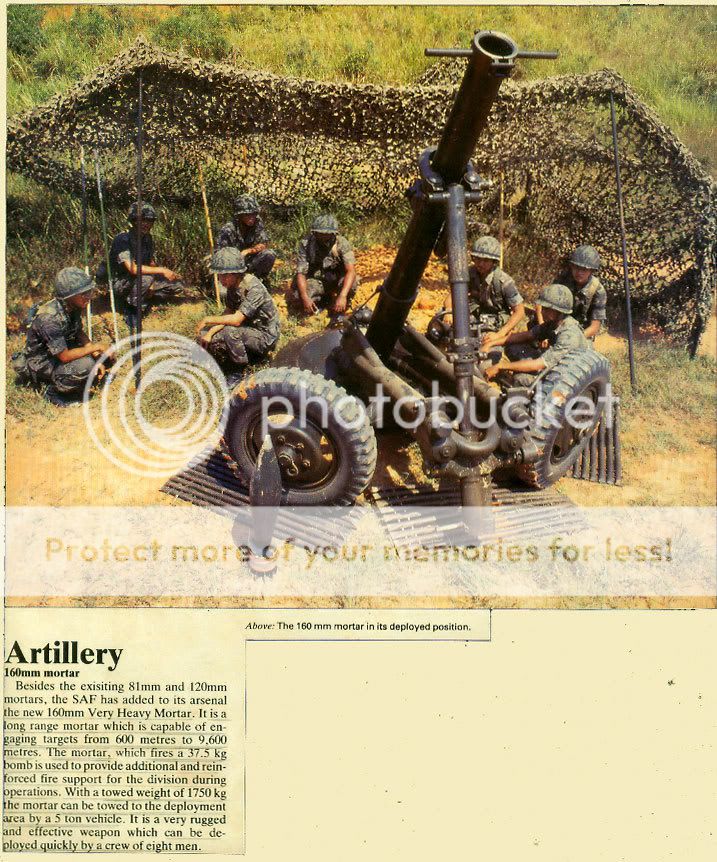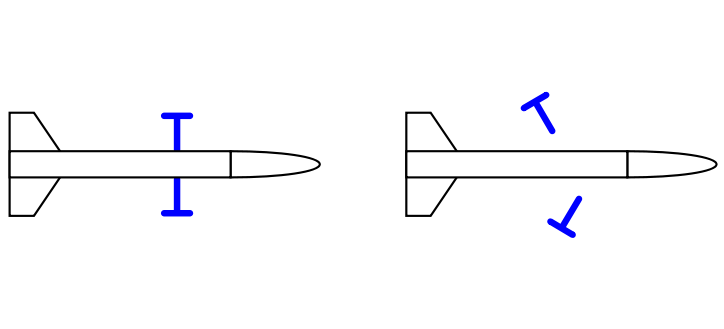sillygoose
Well-known member
Inspired by this design:
Finnish Tampella 160 mm mortar system and extended-range HEFSDS projectile - Armament Research Services (ARES)
Microsoft Word - 129 Makkonen, A.doc (maanpuolustus.net)

Before WW2 mortars were mostly developed for infantry battalion or regimental use and were generally no greater in size than 105-107mm with the exception of the French Brandt 120mm mortar. They had two designs, one an artillery mortar and one infantry mortar with the former intended for divisional artillery usage and the latter for regimental fire support. This went on to inspire the Finnish and Swedish 120mm mortars and through them the Soviet ones, which in turn inspired the German one, etc. The artillery version was basically ignored and the only heavy mortars (not counting the super heavies) fielded by the end of the war were the Soviet 160mm breach loaded mortar and 210mm German/Skoda one that was fielded at the very end. Post war there were a bunch of developments, including the Finnish ones detailed in the link above of 160mm and 300mm as well as the (in)famous Soviet 240mm Tulpan mortar.
What if though more development and investment in heavy mortars happened in the inter war period? It seems in the context of large armies fighting a world war mortars would be a cheap artillery replacement with the right development such as the extended range shells the Finnish developed. Both the high aerodynamic 'regular' mortar shells and the discarding sabot 'spike' shells, with a 16km range and 530m/s muzzle velocity. That actually outperforms a number of 105mm howitzers though with a resulting explosive content quite a bit lighter. Still the weapon itself even with more expensive sabot shells was lighter and cheaper than a howitzer. However even the 'regular' aerodynamic shells of 160mm diameter could reach a muzzle velocity of over 400m/s (nearly double that of a standard mortar shell) and reach over 10km. Accuracy was said to be good even at fully range and that muzzle velocity it is quite impressive for a heavy caliber mortar. The above version is an Israeli version of the mortar with 'only' 9.6km range. I'm guessing that is the more likely range in combat conditions. The weight was less than that of the lightest artillery 105mm howitzer I can find from the period and is probably considerably cheaper to make and operate. The shells would also be double the weight of a 105mm howitzer for a 160mm version, though I'd imagine for countries with 150-155mm howitzers they'd try to field something in that caliber instead with somewhat lighter munitions; so it wouldn't be a 150mm howitzer replacement, just something filling the gap between the 105 and 150-55mm guns in terms of throwing weight.
Additionally since there was already research into smooth bore 'arrow' shells that would be viable with WW2 tech:
Peenemunde Arrow Shell - Nevington War Museum
A 150-160mm mortar could use a 105mm arrow type sabot shell to reach at least 12km, which would have more explosive content than a 120mm shell if not more. I'm basing that on the above articles that claim the 80mm arrow shells had 1.5kg of explosives while a conventional 120mm shell had 2-2.5kg explosives; that is due to the length of the shell which makes up for thin width.
What does the community here think, were heavy mortars a worthwhile 'add' to infantry divisions as additional fire support assets? Especially with extended range munitions, perhaps instead of using/developing infantry guns. I'm thinking they'd be concentrated in a battalion at the division level like the Brits did with their 4.2 inch mortars. Heavier stuff in the 210-300mm range would be in independent artillery brigades like the Soviets did with their 160mm mortars.
160mm Mortar M1943 - Wikipedia
Could they potentially even replace 105mm howitzers for certain applications especially with the arrow shells? How about self propelled versions? Modern 120mm truck mounted SP mortars exist:
China Defense Blog: Norinco SP-9 truck mounted 120mm gun/mortar system (Sino Zauralets??) in PLA color (china-defense.blogspot.com)

A 150-160mm mortar on a light tank chassis should be viable with spade support and a muzzle brake especially if a 150mm infantry gun could be mounted:

Or much heavier guns on very light chassis:

A breach loaded 160mm SP mortar with option to use an extended range shell seems to me at least to be a highly useful fire support asset especially if it can rival or exceed a 105mm SP howitzer in range and payload per shell. Maybe ideal for an armored or motorized division.
Thoughts?
Finnish Tampella 160 mm mortar system and extended-range HEFSDS projectile - Armament Research Services (ARES)
Microsoft Word - 129 Makkonen, A.doc (maanpuolustus.net)

Before WW2 mortars were mostly developed for infantry battalion or regimental use and were generally no greater in size than 105-107mm with the exception of the French Brandt 120mm mortar. They had two designs, one an artillery mortar and one infantry mortar with the former intended for divisional artillery usage and the latter for regimental fire support. This went on to inspire the Finnish and Swedish 120mm mortars and through them the Soviet ones, which in turn inspired the German one, etc. The artillery version was basically ignored and the only heavy mortars (not counting the super heavies) fielded by the end of the war were the Soviet 160mm breach loaded mortar and 210mm German/Skoda one that was fielded at the very end. Post war there were a bunch of developments, including the Finnish ones detailed in the link above of 160mm and 300mm as well as the (in)famous Soviet 240mm Tulpan mortar.
What if though more development and investment in heavy mortars happened in the inter war period? It seems in the context of large armies fighting a world war mortars would be a cheap artillery replacement with the right development such as the extended range shells the Finnish developed. Both the high aerodynamic 'regular' mortar shells and the discarding sabot 'spike' shells, with a 16km range and 530m/s muzzle velocity. That actually outperforms a number of 105mm howitzers though with a resulting explosive content quite a bit lighter. Still the weapon itself even with more expensive sabot shells was lighter and cheaper than a howitzer. However even the 'regular' aerodynamic shells of 160mm diameter could reach a muzzle velocity of over 400m/s (nearly double that of a standard mortar shell) and reach over 10km. Accuracy was said to be good even at fully range and that muzzle velocity it is quite impressive for a heavy caliber mortar. The above version is an Israeli version of the mortar with 'only' 9.6km range. I'm guessing that is the more likely range in combat conditions. The weight was less than that of the lightest artillery 105mm howitzer I can find from the period and is probably considerably cheaper to make and operate. The shells would also be double the weight of a 105mm howitzer for a 160mm version, though I'd imagine for countries with 150-155mm howitzers they'd try to field something in that caliber instead with somewhat lighter munitions; so it wouldn't be a 150mm howitzer replacement, just something filling the gap between the 105 and 150-55mm guns in terms of throwing weight.
Additionally since there was already research into smooth bore 'arrow' shells that would be viable with WW2 tech:
Peenemunde Arrow Shell - Nevington War Museum
A 150-160mm mortar could use a 105mm arrow type sabot shell to reach at least 12km, which would have more explosive content than a 120mm shell if not more. I'm basing that on the above articles that claim the 80mm arrow shells had 1.5kg of explosives while a conventional 120mm shell had 2-2.5kg explosives; that is due to the length of the shell which makes up for thin width.
What does the community here think, were heavy mortars a worthwhile 'add' to infantry divisions as additional fire support assets? Especially with extended range munitions, perhaps instead of using/developing infantry guns. I'm thinking they'd be concentrated in a battalion at the division level like the Brits did with their 4.2 inch mortars. Heavier stuff in the 210-300mm range would be in independent artillery brigades like the Soviets did with their 160mm mortars.
160mm Mortar M1943 - Wikipedia
Could they potentially even replace 105mm howitzers for certain applications especially with the arrow shells? How about self propelled versions? Modern 120mm truck mounted SP mortars exist:
China Defense Blog: Norinco SP-9 truck mounted 120mm gun/mortar system (Sino Zauralets??) in PLA color (china-defense.blogspot.com)

A 150-160mm mortar on a light tank chassis should be viable with spade support and a muzzle brake especially if a 150mm infantry gun could be mounted:
Or much heavier guns on very light chassis:

A breach loaded 160mm SP mortar with option to use an extended range shell seems to me at least to be a highly useful fire support asset especially if it can rival or exceed a 105mm SP howitzer in range and payload per shell. Maybe ideal for an armored or motorized division.
Thoughts?


%20M532A2-WP_0.jpg?itok=z62ovZXn)
